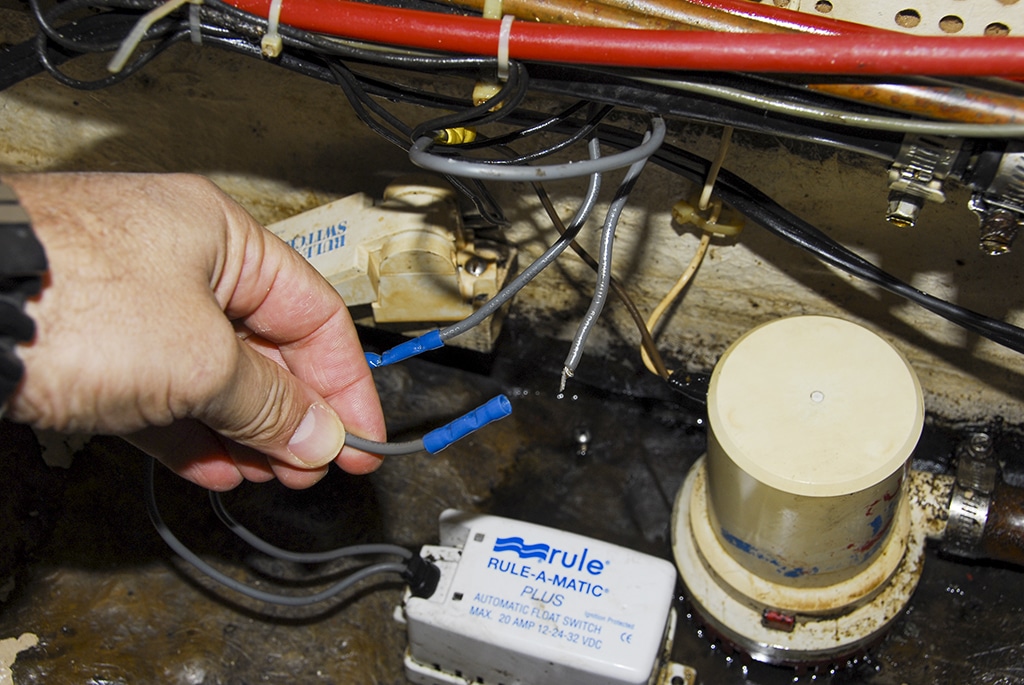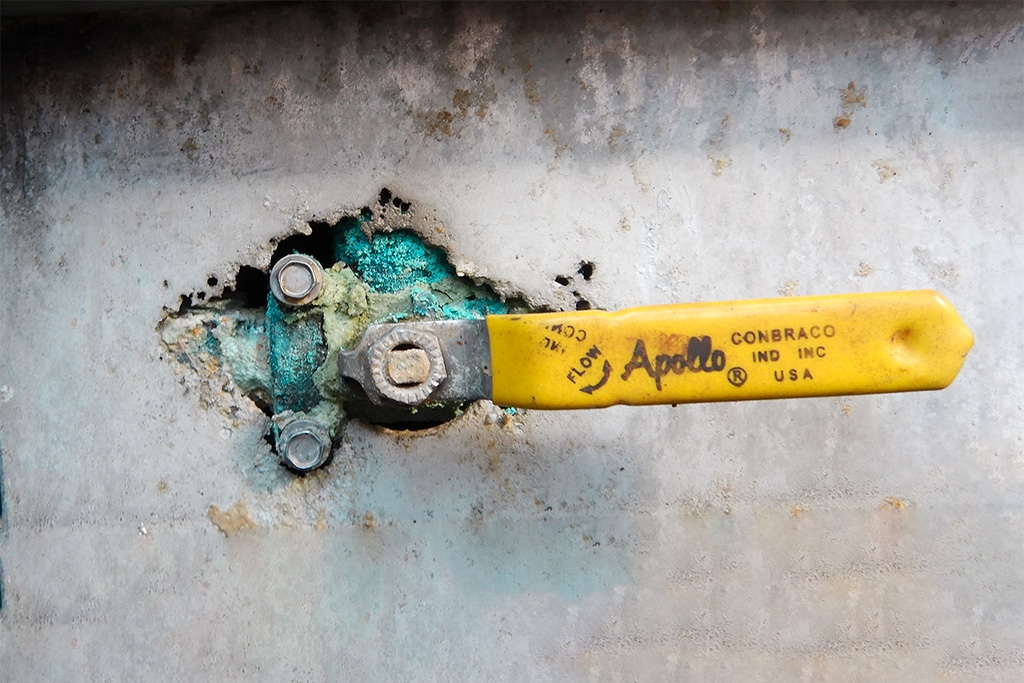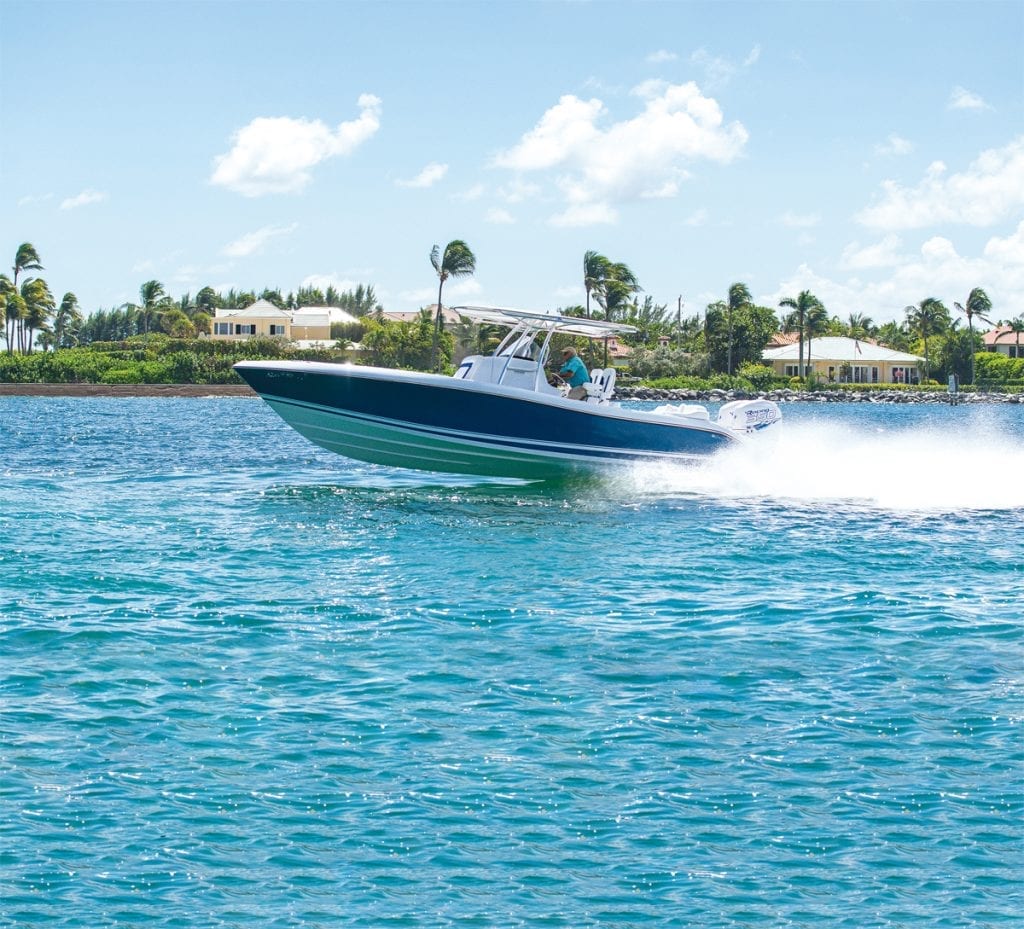Corrosion Demystified
Taking the guesswork out of the analysis
Corrosion is, without a doubt, the most misunderstood and misdiagnosed condition that affects small craft. The good news is no corrosion scenario should remain a mystery—corrosion and its prevention are comprehensible.
Galvanic Corrosion
While there are many subvarieties of corrosion, it boils down to galvanic or stray current for most small vessels. Galvanic corrosion is the most common, and it progresses at a comparatively slow rate, over the course of months and years, often giving boat owners time to identify and correct the problem if they know what to look for.
In its most basic form, galvanic corrosion is a simple process, and like virtually all corrosion, is DC (direct current) electrical in nature. (There are rare exceptions when AC (alternating current) can cause corrosion.) It requires two key ingredients—dissimilar metals and an electrolyte. The metals must be in contact, either directly or via a wire or other conductor, and immersed in the same electrolyte for corrosion to occur; the electrolyte can be fresh or seawater, or even atmospheric humidity. When these ingredients are present, an electric cell is established, much like a battery. While this process technically moves metal from the anode to the cathode, the visible result is metal loss at the anode.
Though there is the potential for some interaction to occur between all dissimilar metals, the farther apart they are on the Galvanic Series—the table that lists the resting voltage and corrosion potential for all metals—the more severe the result, with a few pairs of metals being especially worthy of avoidance, such as aluminum and copper alloys.
Aluminum is among the least noble, or most corrosion-prone metals, while copper resides about one-third of the way up the chart, far enough to be problematic. When they are connected, expect the aluminum to come to grief.
The best example of galvanic corrosion is one that’s beneficial; it’s the anodes used to protect your vessel’s underwater alloys. They are called “zincs,” but in fact, they can be zinc, aluminum, or magnesium, depending upon the application. The anode corrodes sacrificially, thereby protecting the cathode, which may be a manganese bronze prop, an Aqualoy shaft, a bronze thru-hull, or stainless steel rudder.
Stray Current Corrosion
If galvanic corrosion could be likened to the proverbial turtle, plodding along slowly and deliberately, stray current corrosion is the rabbit, moving with startling and destructive rapidity. Unlike galvanic corrosion, which generates its own electricity, stray current corrosion relies on energy that is derived from a battery (and indirectly, a battery charger, alternator, or other DC power source), which is plentiful and virtually endless.
Where galvanic corrosion is measured in milli or thousandths of a volt, stray current is measured in whole volts, hence, its highly destructive nature. How destructive can it be? I’ve encountered stray current scenarios which have devoured stern drives, sail drives, and propellers in a matter of days, in some cases leading to flooding and the loss of the vessel.

Stray current corrosion is most often the result of defective DC wiring, that which is in or near bilge water; faulty bilge pump wiring is among the more common culprits. Contrary to popular belief, electricity does not seek ground, it seeks to return to its source. If stray current is allowed to “leak” into bilge water, and then to a submerged metallic object such as a thru-hull, strut, or rudder, it can then travel back to its source, the battery, wreaking havoc along the way.
Prevention
The familiar saying, “Prevention is the best medicine,” most assuredly applies to corrosion. Galvanic corrosion can originate on your own vessel. For example, installing a manganese bronze prop on a Aqualoy shaft will, in the absence of a sacrificial anode, lead the former to galvanically corrode. Prevention in that case is simple: Maintain your anodes, replacing them when no more than 50 percent depleted.
Galvanic corrosion can also originate on a slipmate’s vessel. For instance, if your neighbor hasn’t changed anodes in two years, and you are both plugged into shore power, your underwater metals and anodes are connected via your bonding systems and shore power safety ground wire, becoming one big, unhappy family, as your anodes protect his or her underwater metals. It’s important to note, this corrosion has nothing to do with AC shore power itself—it could even be turned off—however, the green safety ground maintains a connection between the two vessels, as well as all others that are plugged into the same shore power supply.
Prevention in this case comes in the form of a galvanic isolator, which will block DC voltage from flowing over the AC safety ground yet allow the AC current to pass in order to trip the shore power breaker in the event of a fault. An isolation transformer is also an effective, albeit more costly, means of preventing galvanic corrosion.
There is no silver bullet for the prevention of stray current corrosion. It’s avoided by compliance with American Boat and Yacht Council (ABYC) Standards, which is to keep wiring out of bilges, and where it must enter bilges, pumps for instance, make sure there are no exposed splices or terminations. A sound bonding system also affords submerged metals some protection in that the bonding conductors provide a more direct path back to the power source than the water in which the vessel floats.
When it comes to corrosion analysis, there should be no guesswork whatsoever. If a marine industry professional or fellow boat owner says they believe the corrosion you are experiencing is the result of XYZ, ask them to “follow the electrons.” In other words, explain how the corrosion is occurring by tracing the route the electrons (which travel through metals) and ions (which travel through water) are taking. If they can’t do that, then they don’t understand how corrosion works, and thus are ill-equipped to make an analysis. Using an ABYC-certified corrosion technician will avoid costly misdiagnoses.
-by Steve D’Antonio














